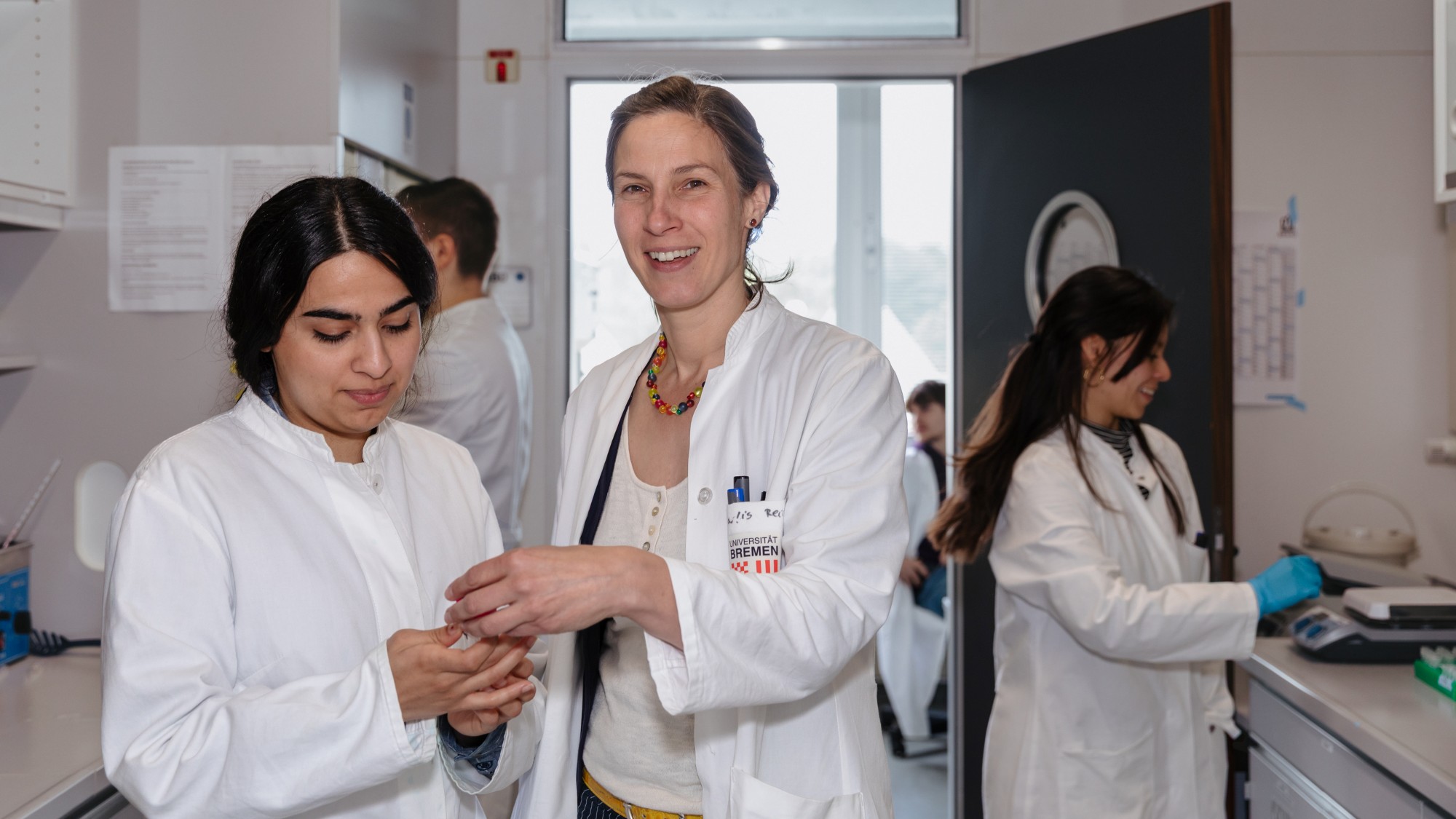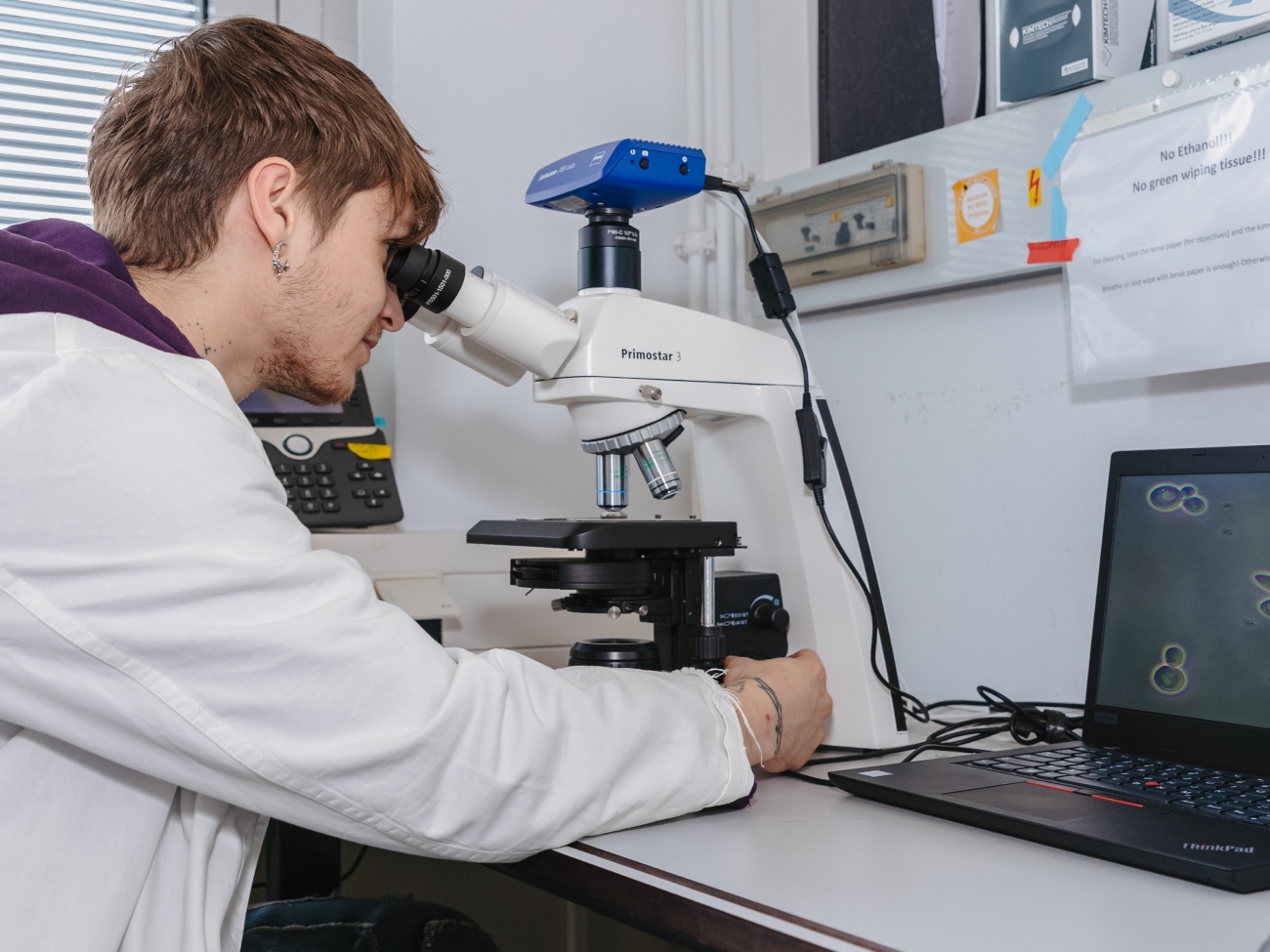
© Matej Meza / Universität Bremen
“The Sea Is Full of Wonders”
Biologist Dr. Marlis Reich chose one of these wonders, marine fungi, as the subject of her research
Scientists have only recently discovered that the oceans are home to fungi. And no, they don’t look like mushrooms or toadstools. At least, we don’t think so. However, these highly diverse organisms are largely unexplored. June 8 is World Oceans Day, and to mark this occasion, Dr. Marlis Reich, head of the Molecular Ecology research group, spoke with us about why these organisms are so fascinating, what their role in the marine ecosystem is, and how this research is important for her teaching.
Marlis Reich remembers exactly when her interest in fungi was born. It was in the early 2000s, when she pursued a degree in biology in Tübingen. At that time, the now 44-year-old studied fungi for the first time, focusing on terrestrial rather than marine fungi. “No one knew much about fungi in the sea,” she recalls. When Reich moved from Göttingen to Bremen in 2011, she resumed her research. “So many people work in marine research here. Discovering marine fungi was my personal moon landing. They still fascinate me today. There are so many fundamental things to explore.”
Fungi Are Everywhere
Just consider their morphology, shape, and form. “We want to record everything that’s floating around out there,” says Reich. Fungi are everywhere, from the coast to the deep sea, in saltwater and freshwater, in the water column and in sediment. Similar to sperm, some swim around, while others drift. How many species are there? No one knows for sure.
“Their morphological diversity is fascinating,” says Reich. Take the yeast she is researching, for example. Several of these single-celled organisms grow by forming buds from which additional buds emerge. Can they still be considered single-celled, or does this mean they are multicellular? Only by describing the structures and shapes of the fungi and comparing the data can we answer ecological questions and identify changes, which is precisely the goal of Reich’s research project. The project aims to use artificial intelligence to automatically recognize and categorize the different fungi forms.

Frederik Piel, Carolina Cortes, Shiva Ghasemi, Thilo Reese, and Sreelakshmi Lakshmanan (from left to right).
© Matej Meza / Universität Bremen
Key Players in Climate Change
The fungi structure, in turn, determines its function. One of these important functions is the decomposition and storage of carbon in the deep sea. For a long time, scientists believed that only bacteria could bind carbon. However, it is now known that fungi also play an important role in this process. “Fungi have unique properties that allow them to break down diverse and often very complex substrates and engage in a wide range of interactions with other organisms.” Marine fungi are also believed to have great potential for medical applications.
Reich’s research focuses on the role that fungi play in organic matter degradation and on how they interact with bacteria and each other. The scientist, who was born in Hannover, has conducted research in the Arctic aboard the Polarstern research vessel in 2024, as well as closer to home, in the North Sea and the Elbe.
Teaching is just as important to her as conducting research. She teaches in the English-language bachelor’s degree program “Natural Sciences for Sustainability,” and in the master’s degree program Ecology. “I can only deliver good teaching because of the continuous input from my research.” This allows her, for instance, to introduce her students to the latest gene sequencing techniques. She also includes people in her teaching whom she has met through her research.

© Matej Meza / Universität Bremen
New Ideas for Teaching
For example, she met a lawyer aboard the Polarstern who negotiates on behalf of Germany at the United Nations regarding protection zones in the open sea. Marlis Reich recruited the lawyer for a role-playing game about the competing interests coastal states may have, such as prioritizing fishing versus biodiversity conservation.
This is an unusual approach for a biologist. “One of the things that I really enjoy about this job is that I have the opportunity to network with other disciplines,” In the coming semester, Reich will work together with a materials scientist from the Leibniz Institute for Materials-Oriented Technology (IWT). The project focuses on the growth of vegetation on the pillars of offshore wind turbines, which can potentially lead to corrosion. “Ecological knowledge can be very helpful here. It’s also enriching to discuss this topic with a materials scientist.”
Marlis Reich considers it a privilege that her profession combines working with young people and simultaneously conducting research. She is grateful to be doing so on a topic that never ceases to surprise her. “The sea is full of wonders,” she exclaims. She also wants to raise her students’ awareness to these wonders. She plans to do so not only by teaching them academic methods but also by training their senses and perception. “I also want to convey that we must protect the sea and nature.”
Further Information:
Visit the website of the Molecular Ecology research group.